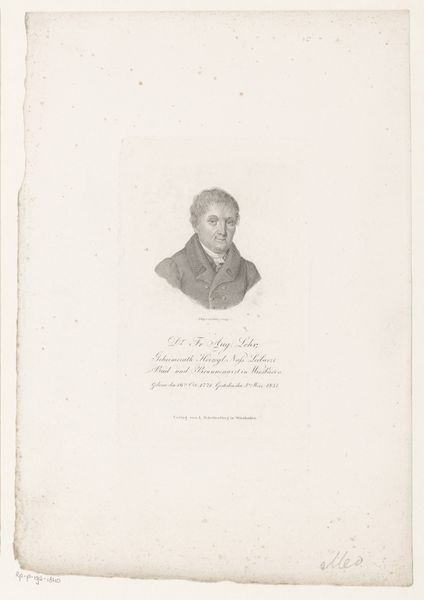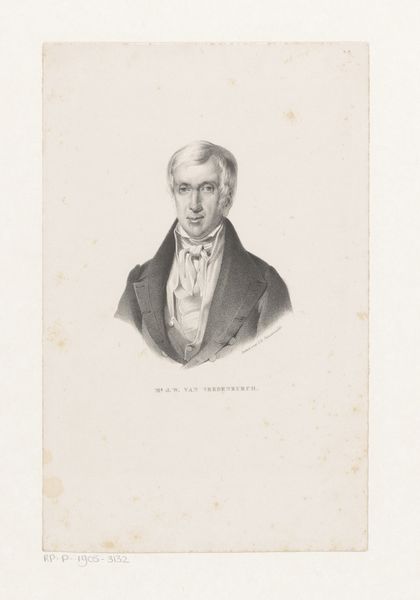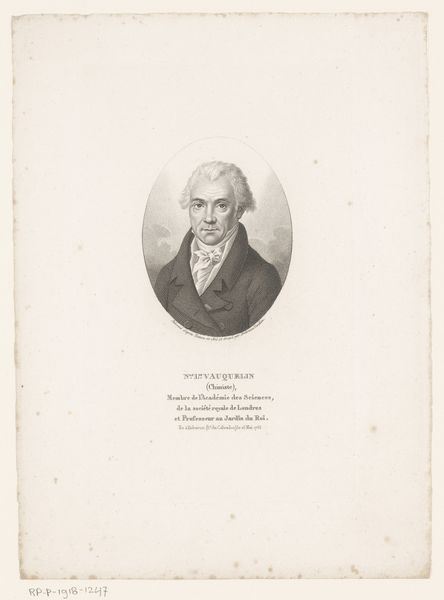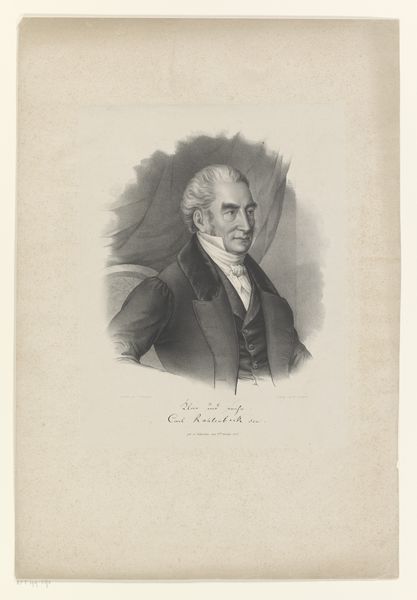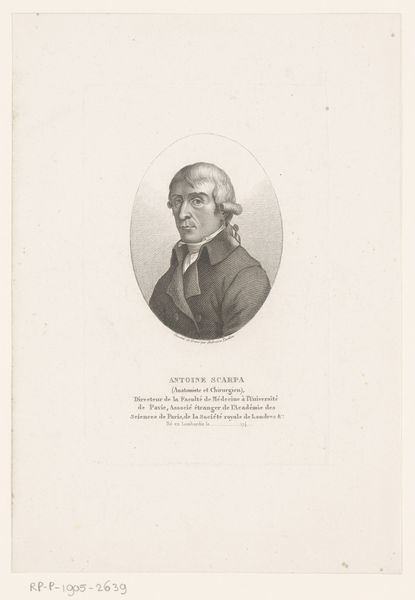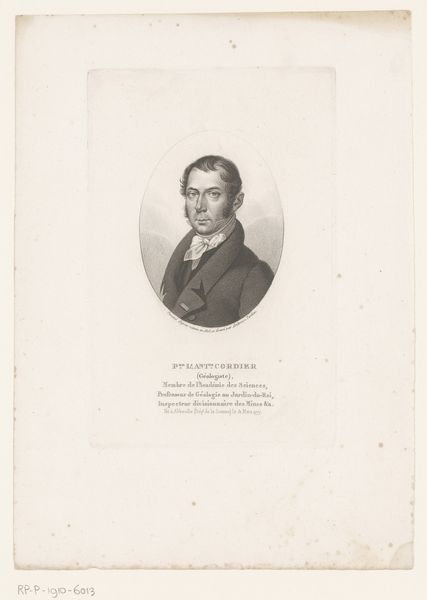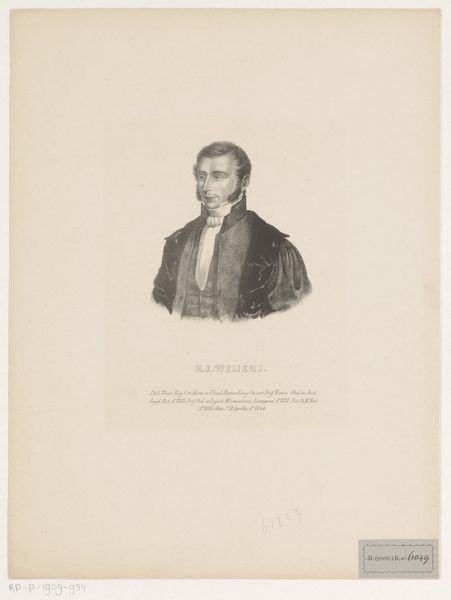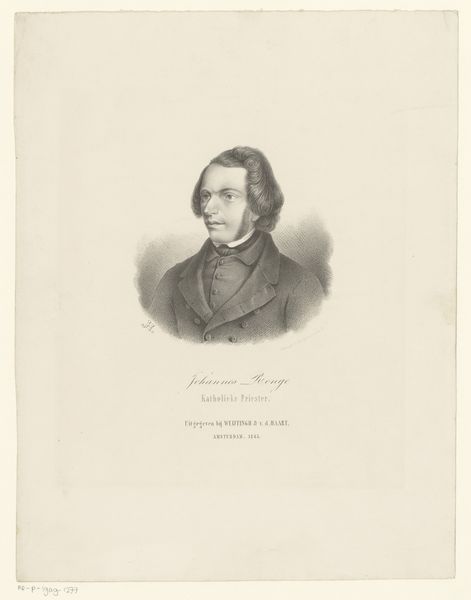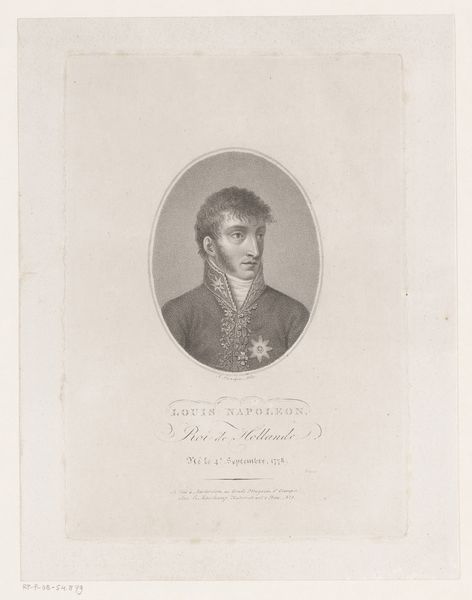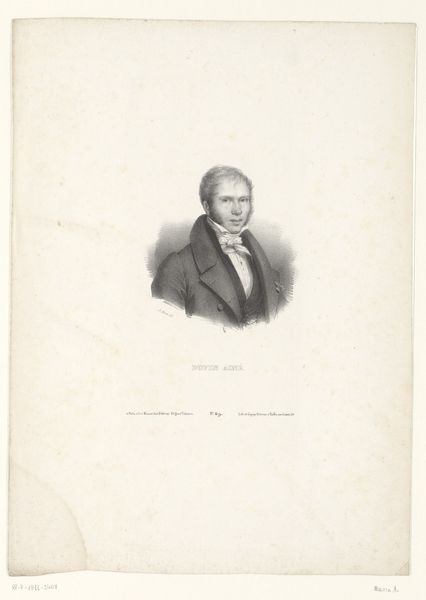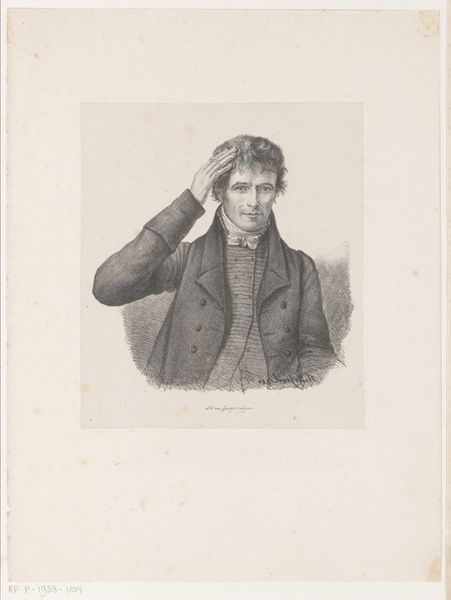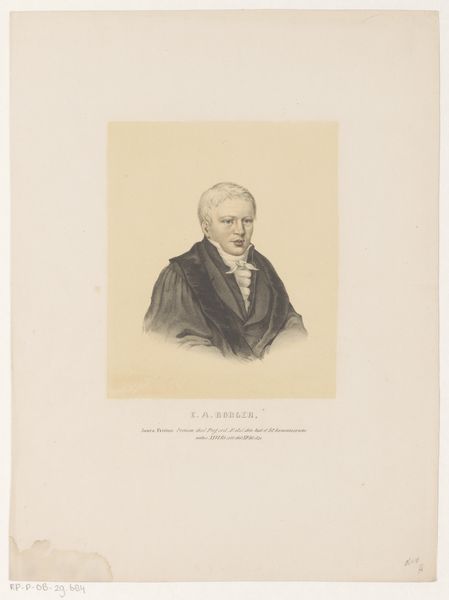
drawing, print, engraving
#
portrait
#
pencil drawn
#
drawing
#
light pencil work
#
16_19th-century
# print
#
pencil sketch
#
pencil drawing
#
engraving
#
realism
Dimensions: height 385 mm, width 255 mm, height 440 mm, width 360 mm
Copyright: Rijks Museum: Open Domain
Editor: So, this is "Portret van Pieter de Riemer," a drawing from around 1823. It looks like it's done in pencil, or maybe an engraving or print? It feels very…precise, almost clinical. What strikes you about it? Curator: I'm immediately drawn to the reproductive labor embedded in this print. It's not just a portrait of a man; it’s a careful multiplication of an image, designed for broader consumption. How does the use of printmaking as a medium democratize the portrait, shifting it away from the exclusive realm of oil paintings accessible only to the wealthy? Editor: That’s interesting, I hadn’t thought about it in terms of access. How does the choice of materials affect its perceived value, or even its cultural purpose? Curator: Precisely. A print allows for widespread dissemination, thus transforming De Riemer's image into a commodity. But, consider the labour involved. This isn’t a quick sketch. There’s a deliberate crafting, suggesting a societal value placed on portraiture and possibly on De Riemer himself. What do you make of the visible labor evident in the detailed hatching and stippling techniques? Editor: Now that you mention it, it does feel like it elevates the status of the man being portrayed. The labour invested argues that he must be an important person! Curator: Exactly! And note the starkness of the engraving; it's a mechanical process of production. How does that impact our understanding of artistic skill versus the mechanical process of art reproduction during this time? Editor: I guess it’s not really about artistry in the conventional sense, but instead highlighting this technology for image distribution and conveying social importance. Thanks, that has completely changed my view. Curator: It’s about the conditions of its production and dissemination – the material and social circumstances that brought it into being and its place in society at that time. Seeing it this way reveals a whole new understanding.
Comments
No comments
Be the first to comment and join the conversation on the ultimate creative platform.
